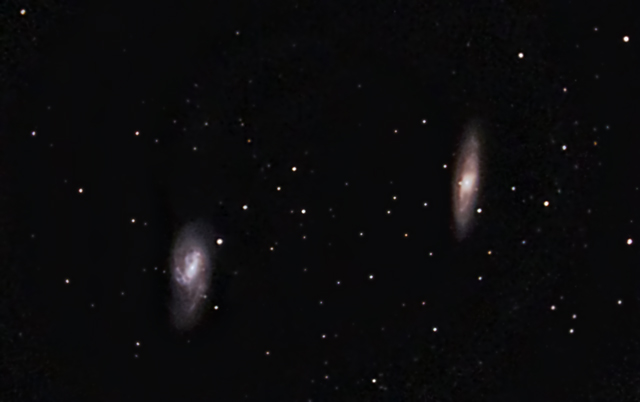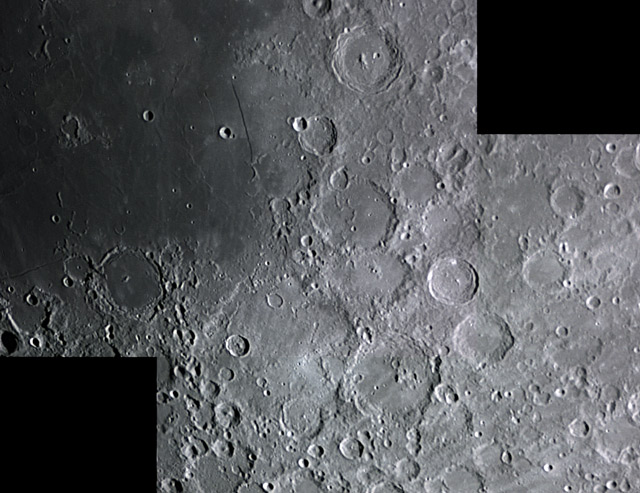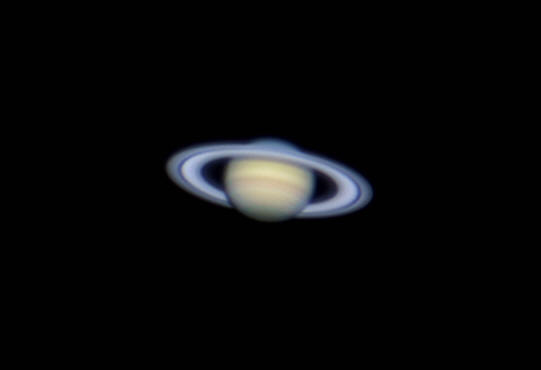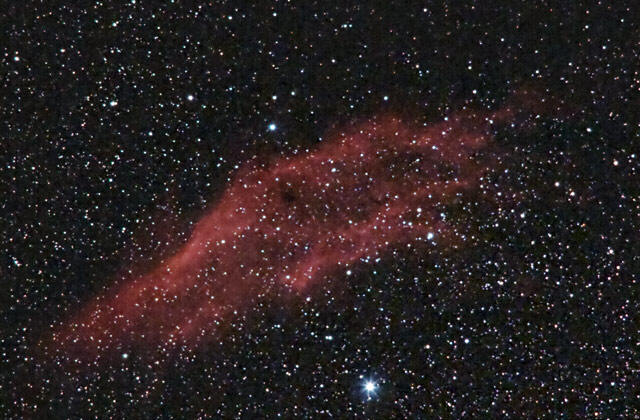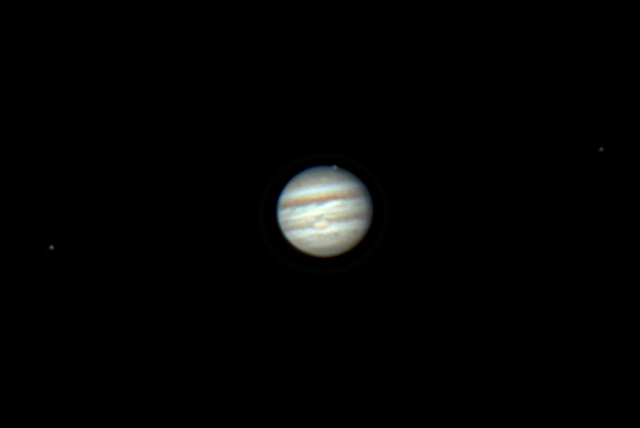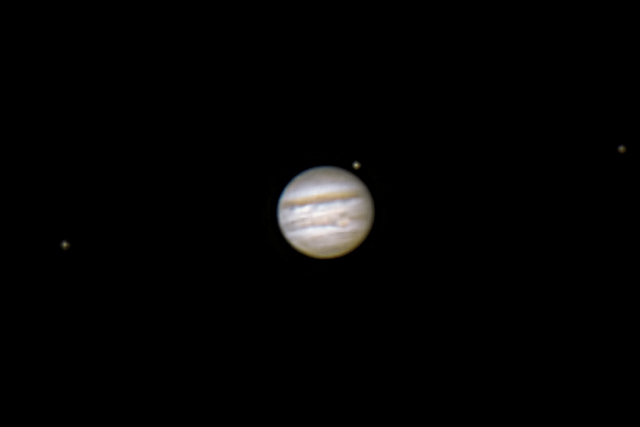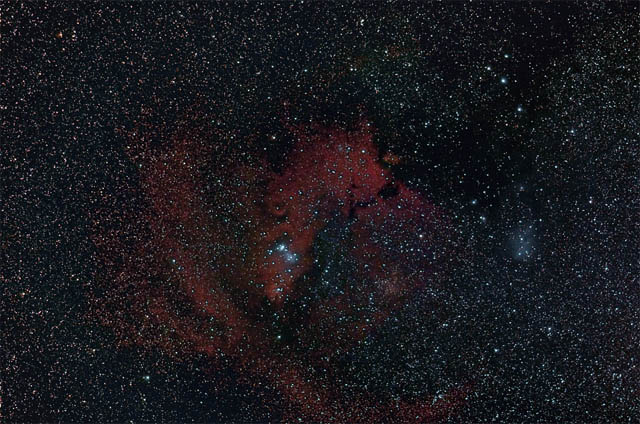______________________
|
Of all the objects in the sky, galaxies fascinate me the most. I love observing them and imaging them. The first image of February is an image of not one, but two galaxies that are part of a group known as the, "Leo Trio." I was trying out a new flip mirror system for my telescope. I liked the idea of having an eyepiece and a camera attached at the same time. I was able to frame the objects in the eyepiece better than trying to see it in the camera viewfinder. This works well with dim objects such as galaxies. I did not get all three galaxies of the Leo Trio in the field of view this time, but I will try this one again and angle the camera to catch them all. |
|
M65 & M66, two galaxies of the "Leo Trio." Imaged on 2/5/06. Celestron C-8, F/6.3 focal reducer, Hutech Type 1 modified Canon 350 XT on a flip mirror system. Exposure was 3x300 second sub-images at 1600 ISO processed and stacked in IRIS with dark, flat and bias calibration. Photoshop, RC-Astro's Gradient XTerminator and Noel Carboni's Astronomy Tools for post processing. Neat Image for noise reduction. |
______________________
|
Clear Sky Clock predicted fair seeing for me on this night, so I decided to try some planetary webcam imaging. The subtropical jet stream has been hindering my attempts to do high-resolution imaging since before Christmas. Anyway, I fooled around with the Moon and then Saturn. I used my new flip mirror, which made it easy to line up the shots. |
|
A mosaic of the Moon, Straight Wall region on 2/7/06. C-8 with a Celestron Ultima 2X Barlow, Toucam Pro in RAW mode and about 50-60 frames acquired and stacked in K3CCDTools for each separate image. Photoshop for post-processing and Neat Image for noise reduction. |
|
Saturn on 2/8/06, 04:00 UT (2/7/06, 10:00 pm CST.) C-8 with a Celestron Ultima 2X Barlow, Toucam Pro in RAW mode and 300 frames acquired with K3CCDTools. De-bayered in AVIRaw. Processed and stacked in IRIS. Photoshop for post-processing and Neat Image for noise reduction. |
______________________
The California Nebula
on 2/13/06
|
Here is an image of the California Nebula taken during a nearly full moon night with my Canon 200mm F/2.8 and a Tamron 2x teleconverter. I was trying out my new 72mm Deep Sky filter and it seems to work well with this lens. |
|
The California Nebula imaged on 2/13/06. Canon 200mm at F/3.2 with a 2X teleconverter (400mm F/6.4) and a Hutech Type 1 modified Canon 350 XT piggybacked on my C-8. Exposure was 10x120 second sub-images at 1600 ISO processed and stacked in IRIS with dark, flat and bias calibration. Photoshop, RC-Astro's Gradient XTerminator and Noel Carboni's Astronomy Tools for post processing. Neat Image for noise reduction. |
______________________
|
Jupiter is an early morning object and at it's highest point in the sky around sunrise, so I woke up early and imaged it. I left the scope outside the night before ready to go. What surprised me is I caught one of the moons at the edge of the planet. Kind of looks like a zit to me! LoL! Here, take a look: |
|
Two consecutive images of Jupiter on 2/14/06, at 12:40 UT and 13:05 UT, respectively. C-8 telescope and a Toucam Pro on a flip mirror system. 408 Frames for the first one and 200 frames for the second image. Acquired and stacked in K3CCDTools 3. Post-processing in Photoshop. |
______________________
The Cone Nebula
Region
on 2/26/06
|
This is my first image of the Cone Nebula region. It did not come out like I expected, but at least I got something to show for my efforts. |
|
The Cone Nebula imaged on 2/26/06. Canon 200mm at F/2.8, a Hutech Type 1 modified Canon 350 XT and a 72mm Deep Sky Filter all piggybacked on my C-8. Exposure was 30x60 second sub-images at 1600 ISO processed and stacked in IRIS with dark, flat and bias calibration. Photoshop, RC-Astro's Gradient XTerminator and Noel Carboni's Astronomy Tools for post processing. Neat Image for noise reduction. |
